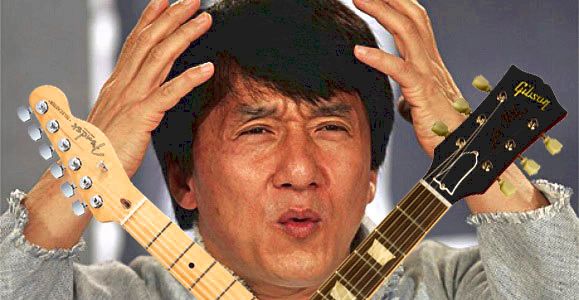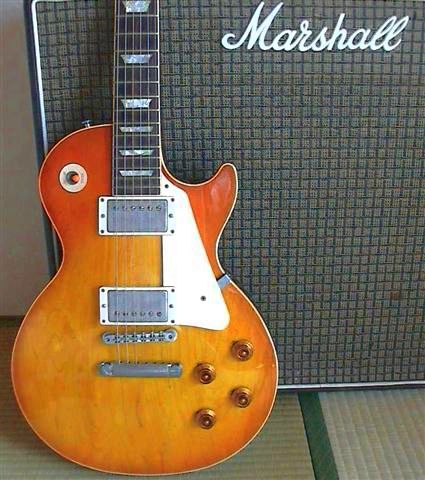
When describing tone, many guitarists use an array of terms to explain the sonic characteristics they perceive I wish to take particular notice at a number of individuals terms and then try to explain the things they mean. It’s worth mentioning that many terms connect with ‘feel’ the feeling a pickup provides you with is vital towards the tone you see. I’ll make an effort to describe probably the most and much more frequently used tonal descriptions.
Aggressive – A hostile tone is extremely energetic and forward. All you play appears to ‘hit’ you hard intensely. It provides extensive everything, too: plenty of highs mids and lows, plenty of output. The lows are usually very tight, the highs appear to possess a large amount of bite and cut into it and there’s a lot of midrange, made to really push your amp towards the edge.
Airy – Airy is like flutey, however with less mids and much more articulation. Sits among flutey and vibrant.
Articulation – Articulation is all about the way the notes are separated from one another. Some pickups show each note very obvious, other medication is less defined. A really articulated tone is frequently quite vibrant and clean and could be flutey but is less inclined to be creamy.
Attack – When every note starts very ‘sharp’ where ‘sharp’ doesn’t have regards to the pitch. Each note includes a clearly defined, sharp, obvious-cut start.
Blossom – This term has been used a great deal with vintage styled pickups and implies that the note ‘opens up’ (blooms, just like a flower) whenever you hit the note. As though it gains a little bit of power and volume following the initial pick.
Vibrant – Bright may be the complete opposite of muffled and mushy: it provides extensive high finish. Brightness doesn’t always imply that our prime finish is harsh or biting, it simply provides extensive it. Brightness may also imply that it’s very articulated (i.e.: clearly separated notes). Brightness and articulation may be used to mean exactly the same factor.
Chunky – A effective low finish having a push within the lower mid-range, providing you with a good feel.
Creamy – Creamy is generally employed for a dark tone of neck pickups, however a bridge pickup might have that characteristic too. It always implies that the notes flow together easily, without focus on the highs, however with a push within the mid-range, giving that fluid feel. It’s nearly as if legato runs flow from your fingers on their own. It shouldn’t be mistaken with ‘muffled’, meaning the voice from the tone is muffled as though you’re talking to your hands before the mouth area. It’s nearly how a notes flow together.
Compressed – Little if any improvement in output. The low output levels are bumped and also the peaks are decreased. A compressed feel causes it to be really simple to complete complicated techniques like tapping and artificial harmonics.
Cutting with the mix – This mixture means the seem the whole band makes. Cutting with the mix implies that your tone sticks out for the reason that mix, like this little speck of garlic clove inside a stew. Its not necessary a variety of it (in guitar-terms: volume) to stick out.
Djent – This describes a heavily distorted guitar that’s being palm muted with staccato playing and produces a seem much like dj-ing. It had been created and popularized through the metal band Meshuggah. Some people make use of this term to explain a method of music.
Fat – Fat is exactly what happens right before a dark tone will get mushy. It provides extensive lows minimizing mids however with enough clearness not to be swamped within the mix or in your tone.
Floppy – A tone that’s overall not tight having a very loose, flexible feel.
Flutey – Flutey is really a difficult term to explain. It frequently refers back to the neck pickup in most cases entails a particular type of clearness. A flutey pickup stays clean, regardless of how much distortion you dial in. It features a feel similar to you’re blowing within the fringe of a container that’s the flutey factor happening! Joe Bonamassa comes with an amazing tone, and the neck pickup surely has that ‘flutey’ quality that’s being coveted by many people players.
Growl – Some tones appear to possess a large amount of push within the lower mids, but retain lots of their clearness. Growl perfectly describes that tone. It isn’t really aggressive, it simply growls, just like a bear!
Juicy – Juicy is similar to creamy, but a little less thick. A creamy pickup could be a bit too unclear in certain guitars, along with a ‘juicy’ pickup goes a lengthy method to be creamy, but has some ‘flutey’ characteristics too.
Hot – When the tone provides extensive output and makes your amp distort more or even more easily, ‘hot’ may be the term that’s getting used. In most cases, ‘hot’ pickups possess a greater Electricity along with a more powerful magnet (ceramic, alnico 5 or alnico 8).
Icepick – A clear, crisp tone with many different highs and upper mids that cut with the mix and often could be even considered painful towards the ear. Basically recall, the word Icepick is shortened from ‘icepick with the head’, or similar.
Mushy/Muddy – Whenever your tone provides extensive low finish but lacks articulation, mushy or muddy may be the term. The main difference backward and forward is the fact that muddy lacks much more clearness and mushy has more focus on the reduced finish.
Sizzle/fizz – In case your tone simply shouldn’t be cleanup within the highs. If it is a little bit (which many players prefer), it’s known as sizzle. If it is a great deal, it’s fizzy. It doesn’t imply that a dark tone provides extensive highs, exactly that it features a rough feel towards the highs.
Twang – Because the ‘quack’ is exclusive towards the Strat, the twang is extremely unique towards the Telecaster. When the quack includes a scoop within the upper mids along with a slight increase in the lows with softer highs, the twang includes a scoop within the lower mids along with a increase in the highs. The increase in highs could be experienced being an icepick inside your ear, however this isn’t always the situation. Twang isn’t just lots of highs and upper mids, though. Additionally, it includes a slight ‘nasal’ quality into it, that appears very difficult to be employed in other guitars, just like the quack appears to become unique towards the stratocaster.
Quack – A tone unique towards the Stratocaster and happens just with the center pickup engaged with either from the outer pickups. A quacky tone includes a distinct scoop in the centre and it has a voice similar to a duck, therefore, the term quack.
Vintage – Vintage can make reference to output (the alternative of hot) or tone. A classic tone is frequently quite clean having a bump within the midrange and upper mids, large amount of clearness, soft lows and sweet highs. In most cases, ‘vintage’ tones are achieved via pickups with less Electricity resistance along with a magnet that is not as strong being an alnico 5, Alnico 8 or perhaps a ceramic.
Warm – A hot tone always provides extensive lows minimizing mids. The word doesn’t denote, however, the clearness from the tone. A hot tone can thus be very obvious or muddy. Both of them are warm, only a different of warm.
Woofy / Boomy – Woofy and boomy are very similar, but boomy is tighter than woofy. Nonetheless, have lots of lows. It doesn’t imply that the lows aren’t tight (because usually, they’re if one of these simple terms has been used), exactly that there’s a variety of it within an disproportionate way.

The other tone terms have you ever heard that you simply didn’t be aware of definition for?
Resourse: http://seymourduncan.com/blog/the-tone-garage/